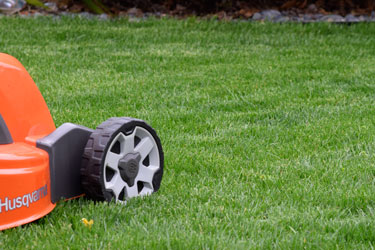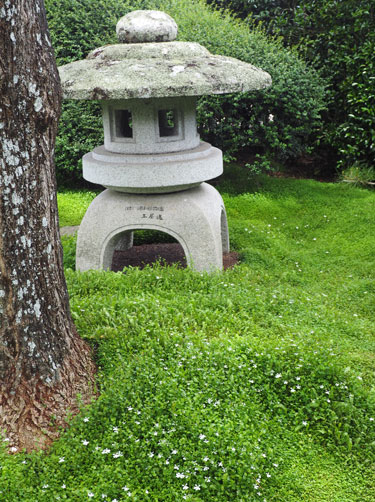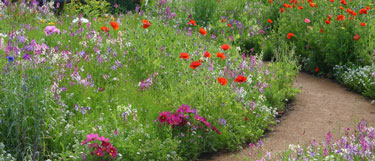Green space
A beautiful open space outdoors encourages children to play in the fresh air and fosters a love of nature. And as a play space there is nothing quite like a living green carpet. A well kept lawn makes a garden look and feel beautiful, it’s cool to sit on in summer and it smells great. As opposed to hard surfaces, lawns absorb carbon dioxide from the air and trap the dust. A thick cover of grass reduces erosion and storm water runoff and protects precious soil.
Artificial lawns are a low maintenance, no-mow alternative. Increasingly realistic to look at, they're great for balconies and other small spaces. The best fake lawns are hardwearing and soft to touch while needing no water except for an occasional hose down to wash away dust. It’s hard to access the eco-friendliness of a fake lawn, however, as greenhouse gas emissions and natural resources are involved in making it, and fossil fuels are burnt in transporting it.
While planting for a better planet has become one of the greatest feel good factors for those who love to garden, lawns are too often associated with fuel burning mowers and excessive water use. Happily, there are some simple work-arounds that minimise these issues.
10 steps to a more eco-friendly backyard
| 1 | Choose drought tolerant grasses that stay looking good with less watering. |
| 2 | Choose slower growing grasses that need less mowing. |
| 3 | Consider an electric or push mower if your lawn area is small. |
| 4 | Raise the blades. Mowing too low reduces the drought tolerance of a lawn and promotes weed growth. |
| 5 | Harvest rainwater and use grey water on your lawn. |
| 6 | Use controlled-release organic fertiliser and not too much. Feed lawns little and often to avoid wasted nitrogen leaching into waterways. |
| 7 | Remove weeds by hand. Consider weeds as biodiversity - something for bees and other beneficial insects. |
| 8 | Mulch or plant shade loving ground covers under trees and in other shady places where lawn doesn’t grow well. |
| 9 | Consider other planting options for slopes and other places where lawn is more of a hindrance than useful. Make good use of ground hugging plants that stay flat without mowing. Choose ground covers to suit your soil type and location. Some of them will even cope with occasional foot traffic. |
| 10 | Use paving instead of lawn for the most trodden areas of the garden. |
TIP: Up-cycle your lawn clippings into compost and mulch. Rake up those autumn leaves and mix with lawn clippings. It’s all the ingredients you need for a beautiful compost that will boost healthy soil and plants.
The meadow look is catching on among nature lovers embracing the resurgence of the wilder side of gardening. A variety of flowering plants provides more food for bees and other beneficials than a monoculture lawn. Autumn is the time to sow seeds for a colourful spring display.

1-Mar-2021

Raise the blades. A good lawn should be at least 5cm thick.

Plant shade loving groundcovers under trees where lawn doesn't grow so well.

A 'meadow' of flowering annuals makes an eye-catching and eco-friendly alternative to a lawn.

